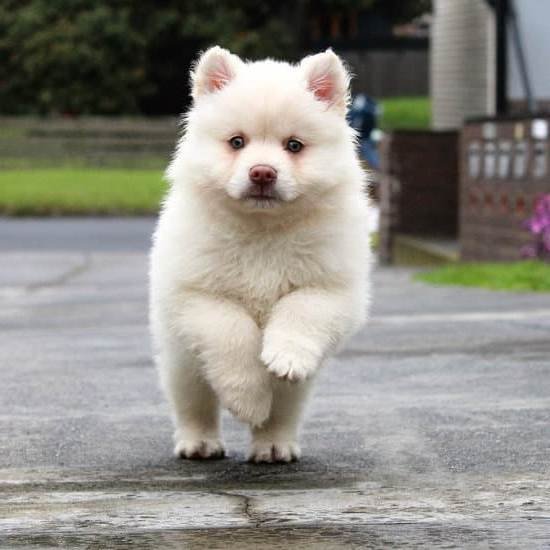Dog Training Crates
– The Pros and Cons
There’s no getting around it – dog crates can be a touchy subject. Some people swear by them, while others think they’re cruel and inhumane. So, what’s the truth? Are dog crates good or bad?
The answer to that question depends on a variety of factors, including the individual dog’s personality and the reason for using a crate. That said, here are the pros and cons of using a dog crate:
The Pros of Dog Crates
1. Safety: A dog crate can be a safe place for a dog to be when you’re not able to keep an eye on them. If you have to leave your dog home alone, for example, putting them in a crate can prevent them from getting into trouble.
2. Training: A dog crate can be a very effective tool for training a dog. When used correctly, a crate can help a dog learn to control their bladder and bowels, and can even help with house training.
3. Security: A crate can provide a dog with a sense of security and comfort. This can be especially helpful for dogs who are fearful or anxious.
4. Travel: A crate can be a helpful tool when traveling with a dog. It can provide a safe place for the dog to stay and can help to keep them calm in unfamiliar environments.
The Cons of Dog Crates
1. Restriction: When used incorrectly, a dog crate can be a form of punishment that restricts a dog’s movement and freedom. This can lead to negative associations with the crate and make it difficult to use effectively for training or other purposes.
2. Health Risks: If a dog is left in a crate for too long or if the crate is too small, it can lead to health problems such as urinary tract infections, hip dysplasia, and spinal cord compression.
3. Anxiety: For some dogs, being confined in a crate can lead to feelings of anxiety and panic. This can be especially harmful if the dog is left in the crate for long periods of time.
So, are dog crates good or bad? The answer to that question really depends on the individual dog and the circumstances. If used correctly, a crate can be a helpful tool for training, safety, and travel. However, if used incorrectly, a crate can be a form of punishment that can lead to negative associations and health problems.
Dogs Crate Training
Crate training is a common technique used to train dogs. It is a process whereby the dog is taught to view the crate as a place of safety and comfort. The crate can be used to confine the dog when you are unable to supervise them, or as a place for the dog to sleep in at night.
The first step in crate training is to introduce the dog to the crate. You should put the crate in a place where the dog spends a lot of time, such as the family room. Place a few toys and treats in the crate, and let the dog explore it on their own. Once the dog is comfortable going into the crate, you can close the door for a few seconds at a time. Gradually increase the amount of time the door is closed.
When the dog is comfortable with the door being closed, you can start using the crate as a place to confine the dog. Put the dog in the crate for short periods of time, and gradually increase the amount of time. If the dog starts to whine or bark, ignore them and wait until they stop before releasing them from the crate.
The crate can also be used as a place for the dog to sleep in at night. Put the dog in the crate at night and gradually increase the amount of time they stay in the crate. If the dog starts to whine or bark, ignore them and wait until they stop before releasing them from the crate.
Crate Training Deaf Dog
Many people think that deaf dogs can’t be trained, but this is simply not true. Deaf dogs can be trained using the same methods as hearing dogs. One of the most important things to remember when training a deaf dog is to always use visual cues.
One of the best ways to train a deaf dog is to use a crate. Crates can be used to housetrain a deaf dog, to teach them basic commands, and to keep them safe when you’re not able to watch them. When crate training a deaf dog, it’s important to use visual cues to let the dog know when it’s time to go in the crate and when it’s time to come out. Some good visual cues to use include putting a sign on the crate door that says “In” and “Out,” or using a hand signal to tell the dog to go in and come out.
When crate training a deaf dog, it’s important to start off slowly. Begin by putting the dog in the crate for short periods of time and gradually increase the amount of time the dog spends in the crate. Make sure to give the dog plenty of opportunities to relieve himself outdoors, and don’t leave the dog in the crate for too long or he may start to potty in the crate.
The key to successful crate training a deaf dog is to always use visual cues. If you are inconsistent with your cues, the dog will not understand what you expect from him. With patience and persistence, you can successfully crate train your deaf dog using visual cues.
How To House Train A Dog Using A Crate
House training a dog is an important process for both the dog and the owner. Dogs naturally want to relieve themselves in an area that is designated as their bathroom, and by crate training your dog you can help them learn to do their business outside. Crate training also has the added benefit of helping to potty train your dog more quickly.
The first step in crate training your dog is to get them used to the crate itself. Start by putting the crate in an area where your dog spends a lot of time, such as the living room, and leave the door open. Put some of your dog’s toys and bedding in the crate to make it more comfortable. Praise your dog when they go near the crate and give them a treat when they enter. Gradually begin closing the door for short periods of time, and increase the amount of time they spend in the crate gradually.
Once your dog is comfortable going into the crate, you can start using it to house train them. When you first notice your dog starting to sniff around or circle, take them to the crate and say “inside.” Once they go in, praise them and give them a treat. If your dog has an accident in the house, take them to the crate and say “inside” immediately. Do not scold or punish your dog for accidents, as this will only make them more reluctant to use the crate.
Crate training a dog can be a time-consuming process, but it is well worth the effort. By using a crate, you can help your dog learn to potty outside quickly and effectively.
Crate Training 1 Year Old Dog
There are a few things to keep in mind when crate training a one-year-old dog. The first is that dogs at this age are still puppies and are not fully mature. They will continue to learn and grow until they are around two years old. Because of this, it is important to be patient and consistent with crate training.
Another thing to keep in mind is that dogs at this age can be quite active. They may have a lot of energy and may be difficult to keep in a crate for long periods of time. It is important to work with your dog to find a crate training schedule that is realistic for both you and your pet.
The best way to crate train a one-year-old dog is to start slow. Begin by putting your dog in the crate for very short periods of time and gradually increase the amount of time. Make sure to give your dog plenty of positive reinforcement when he or she is in the crate. This can include treats, praise, or petting.
If your dog starts to get restless or begins to whine or bark, wait until he or she is calm before letting the dog out of the crate. Be sure to praise your dog for good behavior when he or she is calm.
It is also important to keep in mind that not all dogs are comfortable in a crate. If your dog seems to be unhappy or stressed in the crate, try different techniques until you find one that works for your pet. You may also want to consider using a different type of containment such as a fence or a playpen.
Crate training can be a great way to help your one-year-old dog learn good behavior and can be a valuable tool for house training. However, it is important to be patient and consistent with your dog to make sure the training is successful.

Welcome to the blog! I am a professional dog trainer and have been working with dogs for many years. In this blog, I will be discussing various topics related to dog training, including tips, tricks, and advice. I hope you find this information helpful and informative. Thanks for reading!





